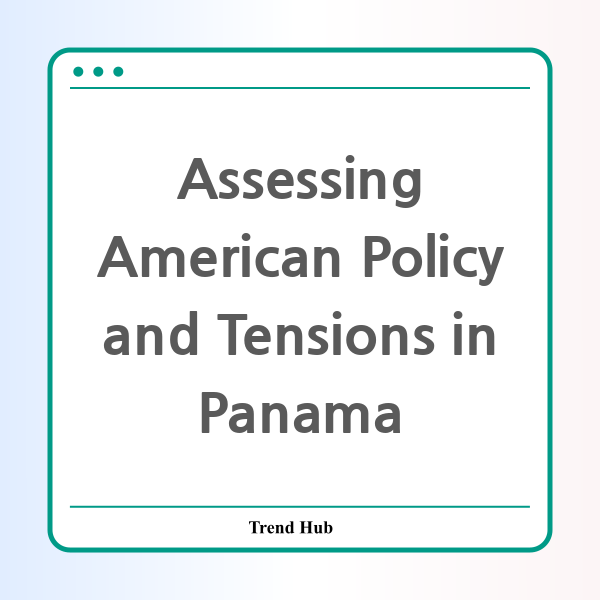* This website participates in the Amazon Affiliate Program and earns from qualifying purchases.

The future of the Panama Canal hangs in the balance as U.S.-Panama relations face unprecedented tension. With Secretary of State Marco Rubio's visit to Panama, questions loom about the U.S. approach toward this key waterway and how it might spark military or diplomatic fallout.
The Panama Canal, a critical artery for global trade, has become a focal point of contention amid rising fears of U.S. imperialism versus a need for cooperative negotiation. As former Panamanian President Ernesto Pérez Balladares warned, a misstep could lead to significant casualties and international outrage against the United States. This scenario has Panamanians on high alert, evaluating possible responses to perceived threats against their sovereignty.
In the face of increasing American scrutiny—especially regarding alleged Chinese military presence—Panama's leadership has found itself at a crossroads. While the Trump administration's appointed envoy has suggested offering concessions to ease tensions, Panamanian officials remain adamant that they will not compromise their authority over the canal. The overarching sentiment is that the U.S. must respect Panama's sovereignty, particularly as national pride is deeply entwined with the canal's operation.
The diplomatic exchanges leading up to Rubio's visit reveal a complex landscape. On one hand, there are efforts for direct, high-level diplomacy; on the other, there is a palpable frustration among Panamanians regarding the American administration's heavy-handed rhetoric. For example, the claim that Chinese troops are stationed at the canal has ignited protests from local leadership, asserting that such allegations lack factual grounding.
Moreover, the rise of China’s influence in Latin America adds another layer of complexity. Since establishing diplomatic relations with Beijing in 2017, Panama has benefited from increased trade and investment. Yet, many in the U.S. fear that this growing relationship may threaten American interests in the region. This fear is compounded by historical events that have shaped Panama's national identity, including the U.S. control of the canal for nearly a century.
Critics argue that the U.S. has historically overlooked the desires of Panamanian citizens and leadership. The past 20 years have seen Panama assert its sovereignty, and many Panamanians now view the canal as a national symbol of pride. While the U.S. Navy remains treaty-bound to defend the canal, the notion of an American invasion resonates poorly with a populace eager for independence from foreign influence.
As tensions escalate, the potential for a backlash against American interests in the isthmus grows. Former leaders caution that if provoked, Panama could retaliate by altering its immigration policies, allowing greater flows of South American migrants northward—in essence, using migration as a tool for international negotiation.
Public sentiment in Panama City reflects a mixture of pride and pragmatism. While many recognize the contributions of the U.S. to local health and infrastructure during the canal's construction, some citizens have developed skepticism toward their own leaders, holding them responsible for stoking anti-American sentiment for political gain. A common refrain from those who once vehemently opposed U.S. presence has shifted to a sentiment of pragmatic acceptance—“Yankee come back again” echoes through the streets, signifying a complex relationship between gratitude for American intervention and a desire for self-determination.
Ultimately, how this relationship evolves hinges on an understanding of Panama's history, its current leadership, and the delicate balance of power between the U.S. and nascent global influences like China. A measured diplomatic approach, one respectful of Panama's sovereignty and aspirations, may prove essential in navigating this geopolitical landscape. In a rapidly changing world, it is crucial for both nations to find common ground without jeopardizing the fragile peace that exists along this historic waterway.
* This website participates in the Amazon Affiliate Program and earns from qualifying purchases.